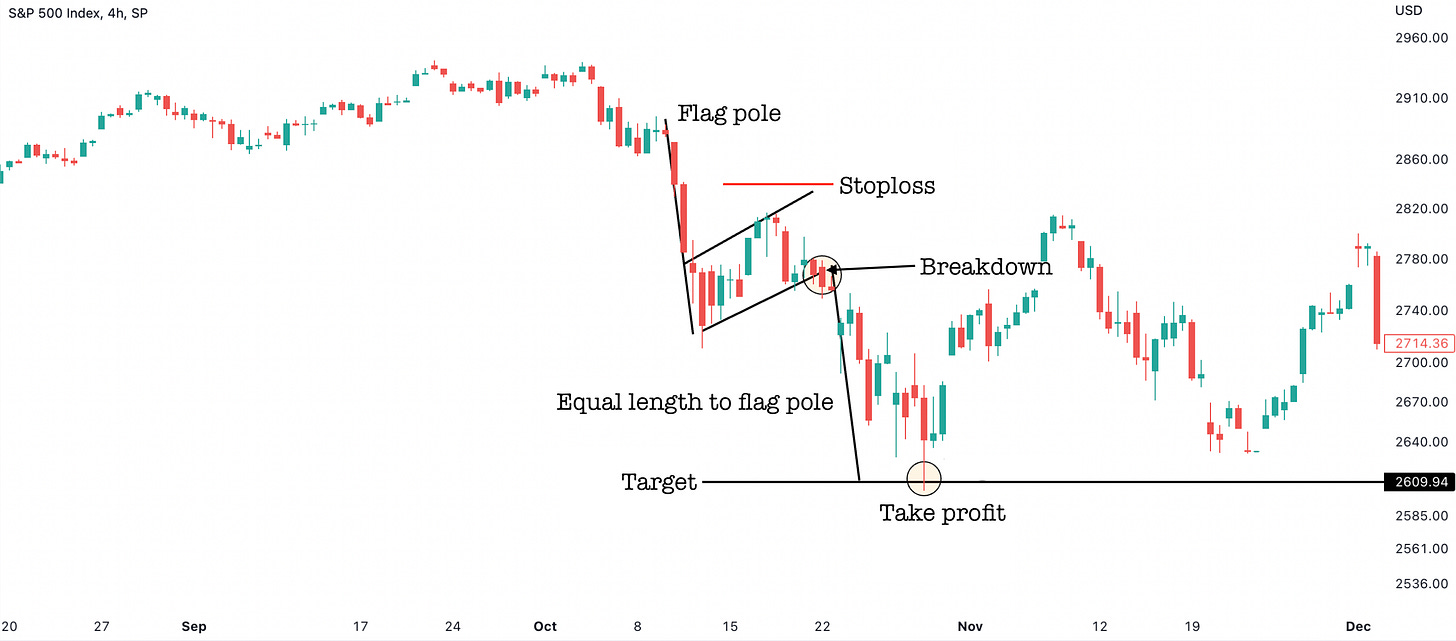Continuation Patterns – Educational Article
Money Making Continuation Patterns
There are 2 primary types of chart patterns, namely, continuation patterns and reversal patterns.
These can either be bullish or bearish. What do we mean by this?
Well, continuation patterns act in the direction of the trend, so when the trend is bullish then bullish continuation patterns are formed and vice-versa.
Similarly, reversal patterns are structures that are formed when the trend is reversing from one direction to another, so either from bullish to bearish or vice-versa.
The best part about these patterns is that they occur on every timeframe, so one can use them based on their investing/trading timeframe preference.
This article covers 6 basic continuation patterns:
1. Bull flag
2. Bear flag
3. Pennant
4. Ascending triangle
5. Descending triangle
6. Price channel
In a follow up Educational Article, we’ll cover 7 key reversal patterns. A key point to note is that, in general, continuation patterns are safer in nature since they are in the direction of the trade.
On the other hand, reversal patterns hold significantly higher profit potential, given that the investor/trader is betting on a trend change (contrarian approach) that can end up catching a lot of investors/traders off-guard (except the ones that were betting on the trend change).
In order to keep this article “to the point” we’ll follow a bullet point structure, so that everyone can have this information in a very quick skimmable manner. Now, let’s dive into the 6 basic continuation patterns.
Bull Flag
Characteristics:
1. Bullish continuation pattern
2. A strong up move occurs that forms the pole of the flag
3. Price then consolidates that forms the flag itself
How To Play It:
1. Breakout point is a confirmed candle close above the top resistance of the flag
2. Target is the flagpole distance that is measured from the breakout point
3. Stop-loss is placed below the support line of the of the flag consolidation
Bear Flag
Characteristics:
1. Bearish continuation pattern
2. A strong down move occurs that forms the pole of the flag
3. Price then consolidates that forms the flag itself
How To Play It:
1. Breakdown is a confirmed candle close below the bottom support of the flag
2. Target is the flagpole distance that is measured from the breakout point
3. Stop-loss is placed above the resistance line of the of the flag consolidation
Pennant
Pennants follow the same principles as the flag pattern i.e., there are bull pennants and bear pennants, similar to bull flags and bear flags.
The main difference between the 2 is the type of consolidation that happens: Flag patterns consolidate in a range type format, whereas, pennant patterns consolidate in a pennant/triangle shaped format.
In the Premium Section next, we’ll cover Ascending Triangle, Descending Triangle, and Price channel pattern.
Find our membership cost/benefits below. If you’re serious about Making Money (our primary goal at Cycles Edge), then the Premium Sections are key for you!






